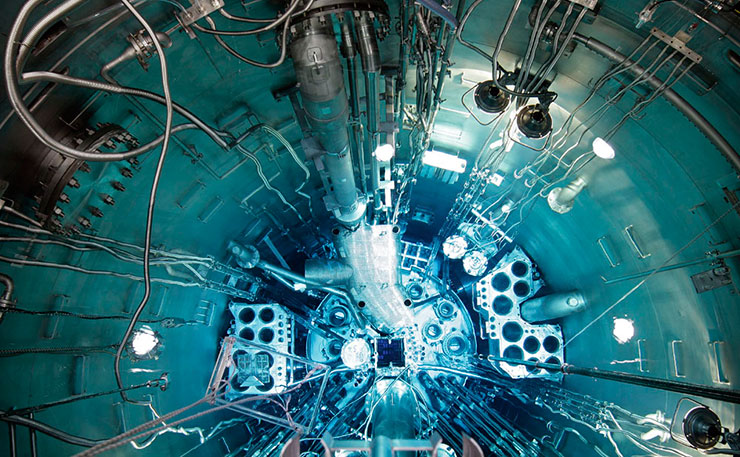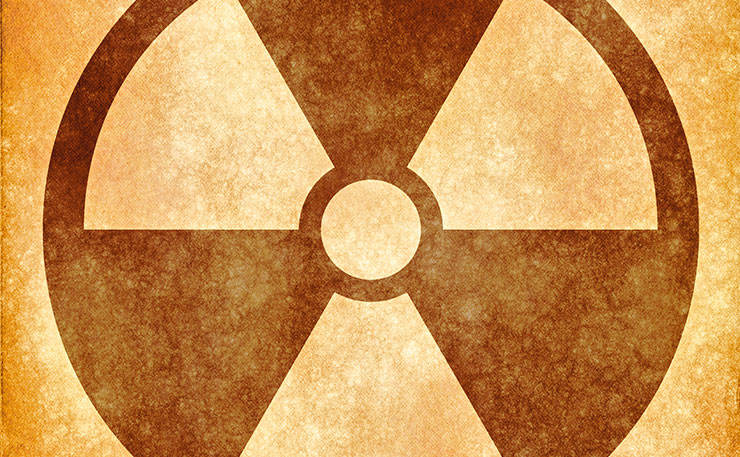Australia’s hunt for a central nuclear waste dump continues, but we already have more waste than we know what to do with, writes Margaret Beavis.
The Federal government is seeking a location for a nuclear waste facility. But the provision of information to communities has been problematic, with some major flaws.
Claims have been made that provision of nuclear medicine services is a key reason to build it, but existing medical waste makes up a very small proportion of the total waste requiring disposal.
In addition, little has been said about ANSTO’s business plan to greatly ramp up Australia’s reactor based production of isotopes from 1 per cent to over 25 per cent of the world’s market, which will massively increase the amount of long-lived radioactive waste produced in the future.
A new process may reduce the volume of the waste, but the actual quantity of radioactive material to store will be significantly greater, and will become most of the radioactive waste Australia produces.
In Australia nuclear medicine isotopes are indeed useful, but according to Medicare figures represent less than 3 per cent of medical imaging. They are most commonly used for bone scans and some specialised heart scans. They are not needed (as claimed by government) for normal X-rays, most heart scans and the vast majority of cancer treatments (surgery, chemotherapy and radiotherapy).
Government statements that one in two Australians at some point in their life need nuclear medicine stretch credibility.
It is interesting to hear government adviser Dr Geoff Currie’s contribution to this debate. But it does not reflect the position of the world leaders in isotope production.
The Canadians, who have been the leading exporters and best practice experts producing 30 per cent of the world’s isotopes for many decades, are in the process of phasing out nuclear reactor production.
Canada produced a “Report of the Expert Review Panel on Medical Isotope Production 2009”. After this report the Canadian government stated, “Canadians have been left to shoulder a disproportionate amount of the nuclear waste burden associated with reactor-based isotope production. This includes the significant costs associated with long-term management of the waste. The Government favours a new paradigm in which Canadians benefit from Canadian-based isotope production, supplemented if necessary from the world market, and supply is sustainable because of reduced waste and improved economics.”

They gave a number of other reasons why Canada wished to phase out reactor use. These included reliability of supply (reactor breakdowns created worldwide isotope supply shortages); investment in reactor production of medical isotopes would crowd out investment in innovative alternative production technologies like cyclotrons; and reactor production was the most expensive option, at no stage commercially viable without major taxpayer subsidies.
The Canadian Triumf research team had a successful pilot project in January 2015. They demonstrated a process that enables the routine production of sufficient Tc-99m (which is 85 per cent of isotopes used) to satisfy the daily demand for a population the size of British Columbia – or 500 patients – from a six-hour run on a common brand of medical cyclotrons.
Clinical trials began in early 2015. There are plans to have 24 cyclotrons operating across Canada by 2018, when they are planning to close down their reactor.
A very comprehensive 2010 OECD Nuclear Energy Agency report found reactor based isotope production requires significant taxpayer subsidies, as the cost of sale does not cover the cost of production.
The report concludes: “In many cases the full impact of Mo-99/Tc-99m provision was not transparent to or appreciated by governments… The full costs of waste management, reactor operations, fuel consumption, etc were not included in the price structure. This is a subsidisation by one country’s taxpayers of another country’s health care system. Many governments have indicated that they are no longer willing to provide such subsidisation.”
Clearly cyclotron production of nuclear medicine is not widely available right now, but planned in Canada in the next three to five years. How rapidly we adopt their technology will determine how long we need to use reactor produced isotopes.
What is needed urgently is a debate about how much waste we make. We have a choice: whether we follow ANSTO’s expensive business model to ramp up reactor manufacture (and the long-lived radioactive waste that goes with it), or collaborate with Canada to develop cyclotron manufacture of isotopes that does not produce long-lived nuclear waste.
It is a bit like Australia’s stance on coal for energy – with continued reliance on 19th century technology rather than a switch to 21st century renewables – do we continue with 20th century reactor technology and back the wrong horse?
ANSTO is a taxpayer-funded organisation. The decision to ramp up reactor waste production will leave many future generations with radioactive materials that last hundreds of thousands of years. So for the six communities proposed, Australia’s future nuclear waste burden is the elephant in the room.
When managing toxic materials, the first principle should be reducing their production at source. We urgently need an inquiry into nuclear waste production in Australia, given we already have more radioactive waste than we know what to do with.
Donate To New Matilda
New Matilda is a small, independent media outlet. We survive through reader contributions, and never losing a lawsuit. If you got something from this article, giving something back helps us to continue speaking truth to power. Every little bit counts.





